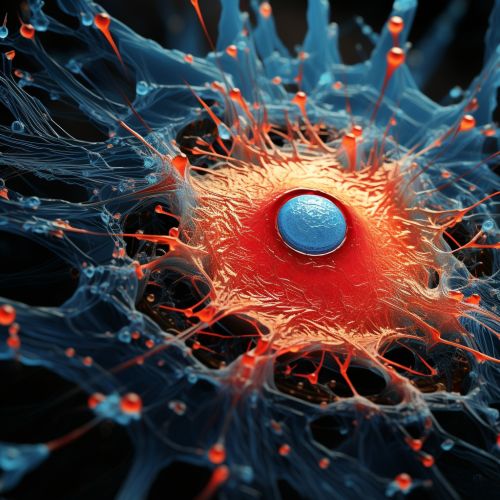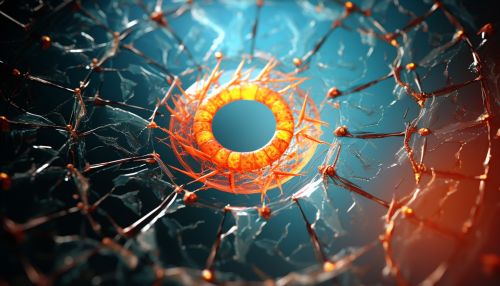Recombination Activating Gene
Introduction
The Recombination Activating Gene (RAG) is a gene that plays a crucial role in the adaptive immune response of jawed vertebrates. This gene encodes two proteins, RAG1 and RAG2, that together form the RAG complex. This complex is responsible for initiating the process of V(D)J recombination, a mechanism that generates diversity in the immune system's B-cell and T-cell receptors.
Discovery and Nomenclature
The Recombination Activating Gene was first discovered in the 1980s during studies on the immune system of mice. The name "Recombination Activating Gene" was chosen to reflect the gene's function in activating the process of V(D)J recombination.
Structure
The RAG gene is located on the 11th chromosome in humans. It is composed of two exons and one intron. The first exon encodes the N-terminal region of the RAG1 protein, while the second exon encodes the C-terminal region. The RAG2 protein is encoded by a separate gene located on the same chromosome.
Function
The primary function of the RAG gene is to initiate V(D)J recombination, a process that is essential for the diversity of the immune system. The RAG complex, composed of the RAG1 and RAG2 proteins, binds to specific DNA sequences known as recombination signal sequences (RSSs). This binding leads to the formation of a DNA-RAG-RSS complex, which initiates the process of V(D)J recombination.
Role in Immune System
The RAG gene plays a critical role in the development of the immune system. The process of V(D)J recombination, initiated by the RAG complex, allows for the generation of a diverse array of B-cell and T-cell receptors. This diversity is essential for the immune system's ability to recognize and respond to a wide range of antigens.
Clinical Significance
Mutations in the RAG gene can lead to severe combined immunodeficiency (SCID), a condition characterized by a lack of functional B and T cells. Patients with SCID are highly susceptible to infections and often require bone marrow transplants to survive. Additionally, mutations in the RAG gene have been associated with Omenn syndrome, a severe form of SCID characterized by skin rashes and an enlarged liver and spleen.


